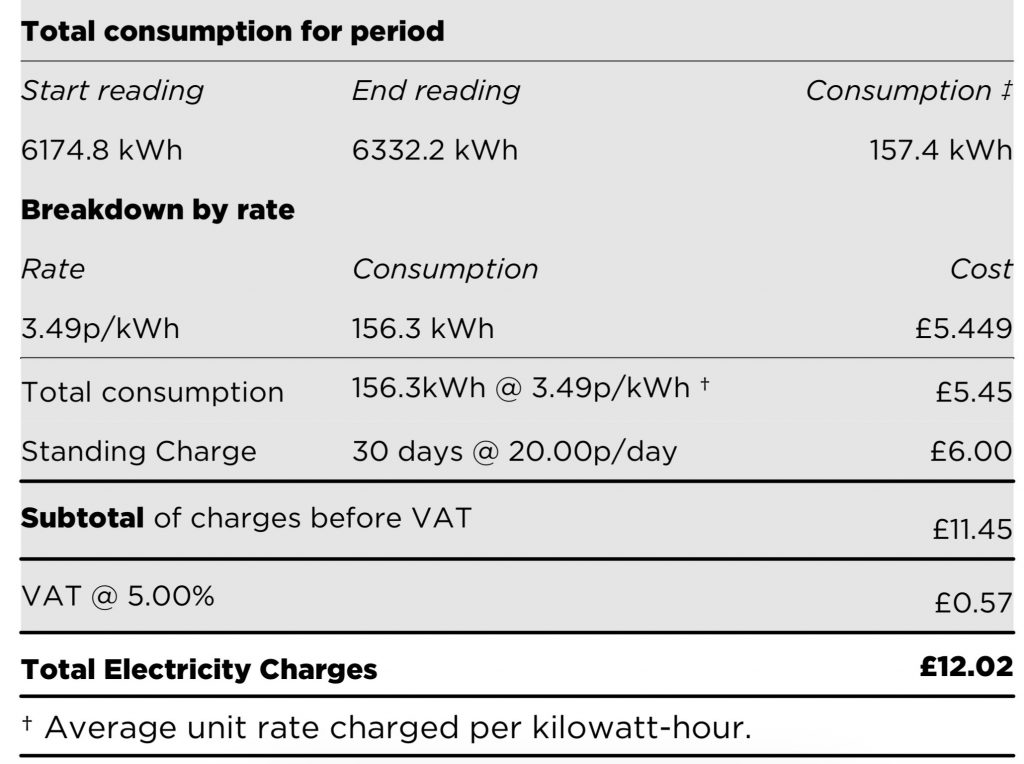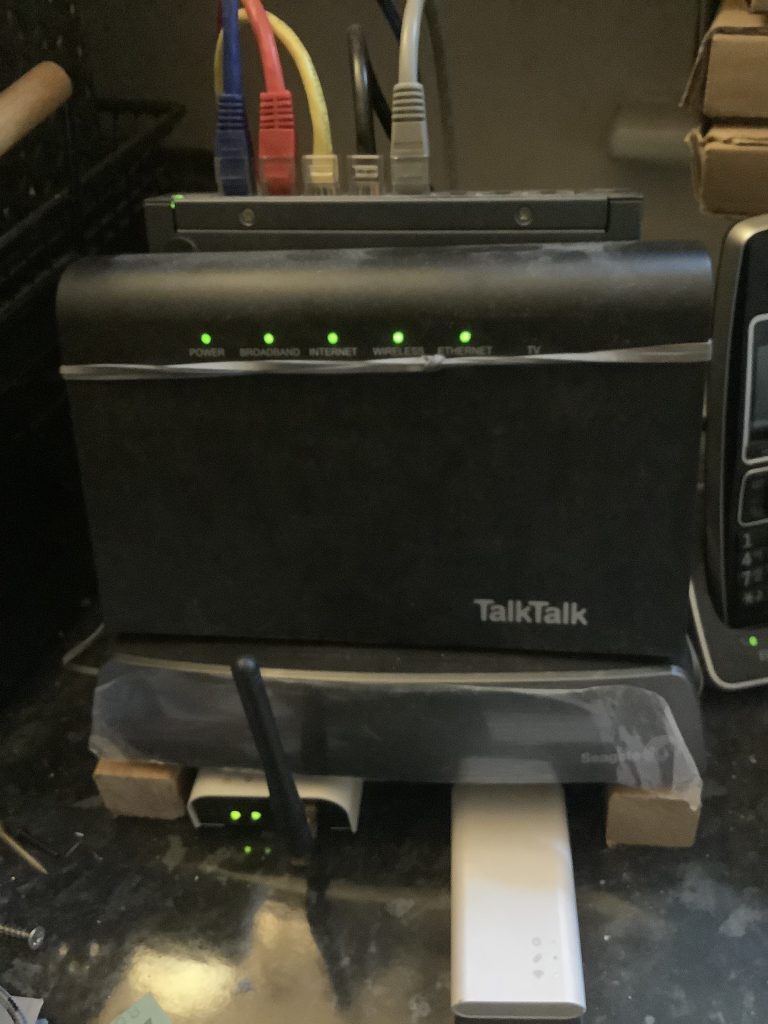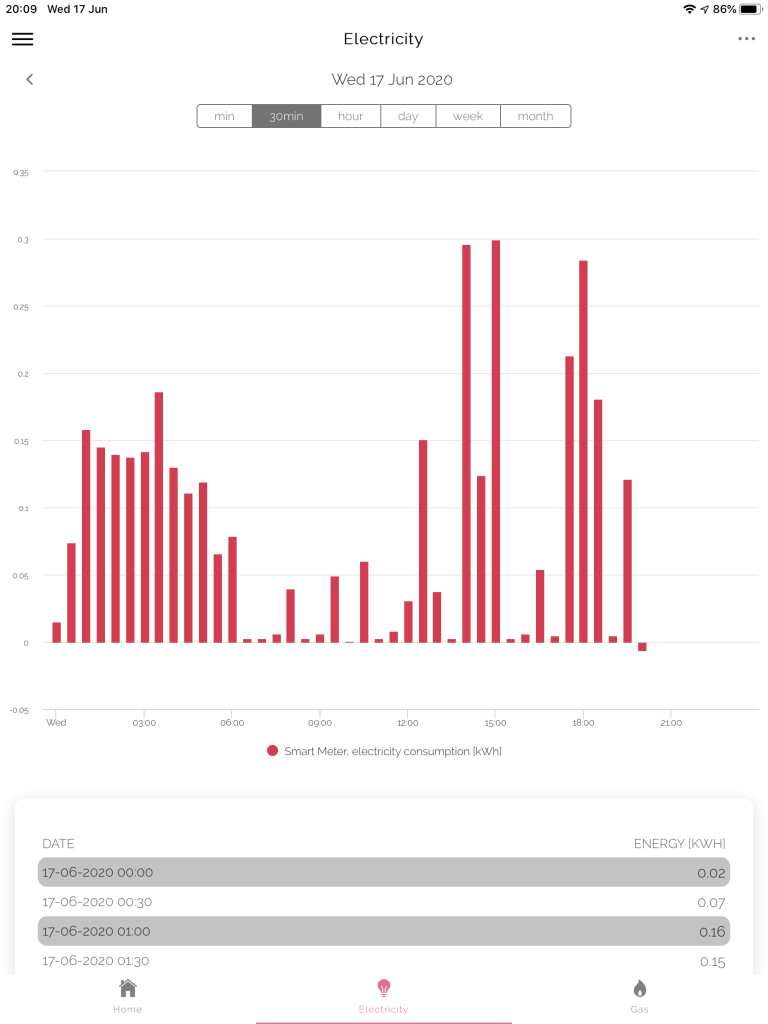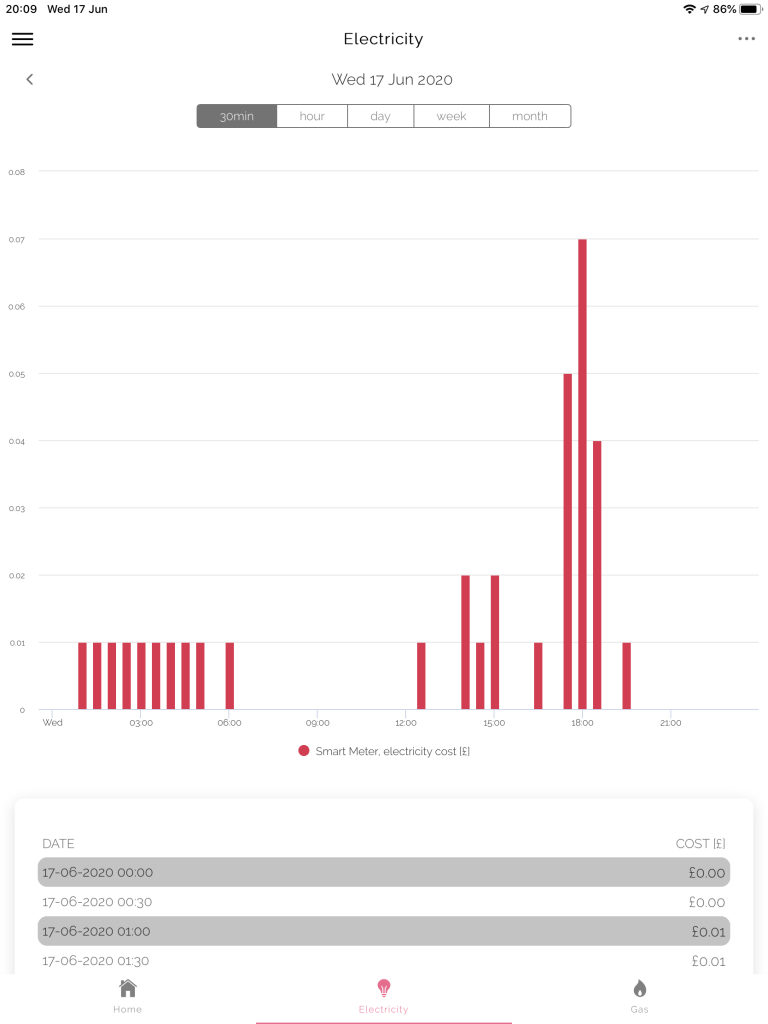Back in late 2018 I purchased a Hildebrand Glow Stick Consumer Access Device (CAD) to monitor my electricity consumption. A CAD is a consumer device that can be paired with domestic smart meters to provide the consumer with a means of reading the meter. All UK smart meters are supplied with a dedicated in-home display (IHD) to display energy consumption, which is also an example of a CAD. The Glow Stick pairs with the meters like the IHD but shares the data to the cloud from where it can be read either via an app (Bright) or another device using APIs.

Each smart meter effectively has two interfaces – a Wide Area Network (WAN) connection used for metering and billing and a Home Area Network (HAN) used for connection between meters (electric and gas), hub (embedded within the electric meter) and IHD. The HAN is also available for smart home devices.
“Network hub” including (from top to bottom):
- Network switch providing additional hardwired connections to the internet, placed behind..
- TalkTalk router providing WiFi and 4 hardwired connections to the external internet, placed above..
- Network storage, placed above..
- Immersun bridge (left) and Glow Stick (right and forwards)
When I initially installed the Glow Stick it provided a very useful tool to see current and historic energy consumption, but the equivalent cost displays were incorrect (at no fault of Hildebrand) because the CAD correctly read the meter costs, but the meter was not sufficiently sophisticated to store the complex Agile tariff (where unit cost changes every 30 minutes).
I recently learned that Hildebrand now had the ability to take the tariff directly from Octopus Energy via API, bypassing the incorrect tariff data in the meter. A quick support email to Hildebrand confirmed that this was not only possible, but also that the cost data would be corrected back to when I bought the Glow Stick back in 2018. A few days later and the conversion was complete.
These two views show today’s part-complete data:
The screenshot on the left shows today’s part-complete energy data. That on the right shows the equivalent cost data. Had the unit rate been constant throughout the day then the two profiles would have been proportional, but instead the screenshots show the magnifying impact of the higher unit rates in the four to seven PM window with equivalent consumption to the late afternoon resulting in rather higher costs.
I should emphasise however that my average unit rate is very low as I usually have much higher consumption in low cost periods than I do in high cost periods.

One of my recent electricity bills had an average of 3.49 p/kWh ex-VAT. Half-hourly rates varied between around minus 10 p/kWh (I.e. I was paid to use electricity) to plus 25 p/kWh. A low average price was achieved by shifting electricity consumption to when the price was lowest.
My next step is likely to be to use the API to get the real time household load for load management as an increasing number of electrical consumers (potentially a second car charger) risks overloading my supply fuse if all loads were on simultaneously.




Hi – thanks for your update on Glow/Hildebrand.
Did you progress with the API, and infact, where are the docs for it? (Im just about to buy the Glow stick).
Is all the info supplied when purchase is complete, as I cant see it on their site.
I want to be able to store and display the data on a grafana setup.
Hello Andy. This is the API definition https://bitbucket.org/ijosh/brightglowmarkt/raw/fa1c1c4e2e75cdb63d58aa8c5492f8bd377d886a/GlowmarktAPIDataRetrievalDocumentationIndividualUserForBright.pdf